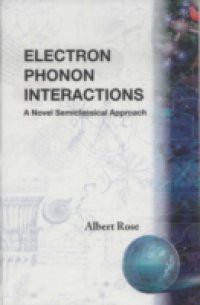This monograph is a radical departure from the conventional quantum mechanical approach to electron-phonon interactions. It translates the customary quantum mechanical analysis of the electron-phonon interactions carried out in Fourier space into a predominantly classical analysis carried out in real space. Various electron-phonon interactions such as the polar and nonpolar optical phonons, acoustic phonons that interact via deformation potential and via the piezoelectric effect and phonons in metals, are treated in this monograph by a single, relatively simple “classical” model. This model is shown to apply to electron interactions with the deep lying X-ray levels of atoms, with plasmons and with Cerenkov radiation. The unifying concept that applies to all of these phenomena is a new definition of a coupling constant. The essentially classical interaction of an electron with its surrounding is clearly brought out to be the cause of spontaneous emission of phonons. The same concept also applies to the case of spontaneous emission of photons. While the bulk of this monograph deals with quanta of phonons and quanta of photons, a discussion of the acousto electric effect which is a purely classical phenomenon is presented. The newly defined coupling constant turns out to be valid too for this discussion. This universality of the coupling constant goes far beyond. It is equally applicable to amorphous materials. This significant application gives an analytic formulation of mobility in amorphous materials.Contents: Energy Losses of Hot ElectronsField and Temperature Dependence of Electronic TransportEnergy Losses by Hot Electrons in Solids: A Semiclassical ApproachReadership: Physicists, solid state physicists and electronic engineers.Key Features:A Japan Foundation sponsored iconoclastic assessment of Asia's future by a team of international expertsMakes the case for intra-Asian economic “divergence” instead of “convergence”Addresses the specter of “deglobalization” caused by “global imbalances,” and “beggar-thy-neighbor” protectionismAddresses Japan's economic malaiseGrapples with the issue of “global economic coupling,” and combines culture and systems variables together with standard microeconomic and macroeconomic methodologies

